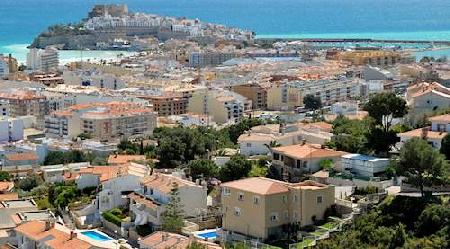Castellón de la Plana
 Despite the fact that Castellón de la Plana is an important industrial city in Spain, it is also a popular holiday destination, as its history and architecture attracts many tourists. Castellón de la Plana is the capital of the province of Castellón de la Plana, eastern Spain, in Valencia, 4.8 km from its Mediterranean port of Grao. It is the center of the Spanish production of oranges and has a large petrochemical industry. Fishing is important. The city was reconquered (1233) from the Muslims by Jaime I de Aragón. In 1251 it was transferred 3.2 km from the top of a hill to its current location on a plain.
Despite the fact that Castellón de la Plana is an important industrial city in Spain, it is also a popular holiday destination, as its history and architecture attracts many tourists. Castellón de la Plana is the capital of the province of Castellón de la Plana, eastern Spain, in Valencia, 4.8 km from its Mediterranean port of Grao. It is the center of the Spanish production of oranges and has a large petrochemical industry. Fishing is important. The city was reconquered (1233) from the Muslims by Jaime I de Aragón. In 1251 it was transferred 3.2 km from the top of a hill to its current location on a plain.
The city is located in the east of the country, on the Mediterranean coast. It is part of the Plana Alta (Costa Azahar), which translates as the Orange Coast. Castelló de la Plana was founded in 1252.
The historic center of Castelló de la Plana is four kilometers from the coast. The city is based on a plain, but gradually grew towards the coast and now all its avenues and streets face the sea, while directly on the coast there is a relatively new area of the city - El Grao.
Main Square:
One of the most important places in the city is the Plaza Mayor. It is a pedestrian plaza, where the main monuments and events of the city are held. Since the foundation of Castellón, the Plaza Mayor has been the center of his life. It is even the home of the Central Market.
Fadri bell tower:
Next to the cathedral is the medieval bell tower of El Fadrí, a 60-meter octahedral structure that was built over a century: from 1457 to 1593. There are eight bells in the tower and an observation deck.
Town hall:
Nearby is the Palaco municipal building with its Tuscan-style facade. The city council is registered in the state's historical heritage register.
Kanamo Market:
The Lonja del Cáñamo building is on the Via Caballeros. It exists since the beginning of the 17th century; in the 19th century it was expanded by one floor. The Bag is decorated with allegorical paintings by Joaquín Oliette. Its architecture can be called eclectic.
Basilica of Our Lady of Ledo:
The Lledó Basilica is located at a distance from the center, on the Vía Virgen de Lledo. The pilgrimage temple, founded in honor of the miraculous image of the Virgin of Ledo, has existed since the 14th century. In the 18th century it was rebuilt in the classical style.
Post Office:
The elegant Castellón Post Office was built between 1917 and 1932, in Moorish style. The post office is in Plaza Tetuán.
The Old Casino:
In 1922 Francisco Maristani built a casino (Casino Antiguo) in Plaza del Sol. The elegant Art Nouveau building became the public center of the city for many years.
Planetary:
The city's beaches are in the Grao area. The coast stretches for 10 km and has excellent sandy beaches. Their infrastructure is not very developed, but they are not too full.
To the north of the port is El Pinar beach, along which stretches a wide strip of the Playa del Pinar green park. The beach is bordered by Calle del Mascarat.
Then the Playa el Gurugú begins and along its coast is the Castellón aeroclub. El Gurugúgi Beach is a long and wide beach with various entertainment equipment. Gurugi ends in the De l * Obra channel.
The Canal de la Obra is followed by Playa el Serradal, which extends to the next town, Benicasima. Its distinctive feature is the dune area.

